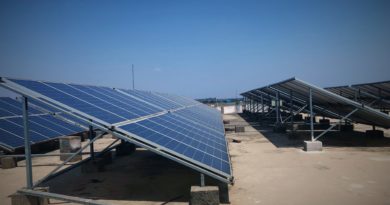Sustainable Development through Solar Agriculture Pumps
“Green revolution is more a tube well revolution than wheat revolution”- (Repetto, 1994; Shah et al., 2007).
The huge irrigation / pumping requirement has been mainly dependent on fossil fuel-based energy sources such as coal, diesel, etc. which are limited, costly and affect the environment. The irrigation service should be affordable, reliable & Eco-friendly. As these aspects are not always associated with conventional sources of energy, non-conventional methods like use of Solar Agriculture Pump can be an alternative solution.
Agriculture sector is the largest employer in India’s Economy with more than 50% of the population still dependent on this sector for livelihood. The pressure due to irrigation and usage of conventional sources of energy has always been enormous. Over 18% of total electricity consumption and over 5% of total diesel consumption in India are already being used for irrigation purposes (Central Electricity Authority (CEA), 2015; Nielsen, 2013). Moreover, as ground water is receding at the rate of 0.3 M per annum, more energy will be required to pump same quantity of water.
The sector is also the largest employer globally, 40% of the population rely on it but many of whom live in poverty because of improper utilization of it’s potential; as mainly depend on irrigation. Agriculture has been mostly dependent on rain for water requirements which made this sector unpredictable and has left many people with meagre earning, leading to poverty. Increasing productivity in this sector is widely recognised as one of the most effective ways to fight penury. In fact, for every 10% increase in farm yield, there has been an estimated 7% reduction in poverty in Africa and more than 5% in Asia (United Nations Environment Programme (UNEP), 2012).
Various studies show that Solar agriculture pumps are reliable, cost -effective and environmentally sustainable solution in rural areas for decentralized irrigation services. Once deployed, it can be beneficial to both the users and the Government.
Benefits to the Users:
- Reliable supply of energy and improved access to water for irrigation
- Improved crop yields and increased incomes
- Reduced manual work and better usage of time
- Enhanced crop resilience and food security
- Food with high-value crops
- Optimization of water usages
- Additional benefits for health, education and poverty alleviation
Benefits to the Government:
- Reduction in electricity and fuel use
- Subsidy savings
- Reduced fuel imports
- Creation of small businesses/employment across the value chain
- Improved reliability of power systems
- Increased agricultural economic output
- Emissions reductions (climate change commitments)
- Better control of water usage
The benefits are well-known, but the effort should be how solar agriculture pumps can be used for optimum water usage. Solar Agriculture Pumps working on a free power source can act as a challenge for the sector and to the environment due to over irrigation and thus affecting the crop produce as well as the ground water level.
References:



Pingback: New ways to Rural Life: Thanks to Solar Energy - SolarPost
Pingback: Solar Water Pumps Promotion: Need a Holistic Approach - SolarPost
Pingback: KUSUM Scheme – a Win-Win Situation - SolarPost
Pingback: IoT based Digitalisation of Technologies for Better Outcome - SolarPost